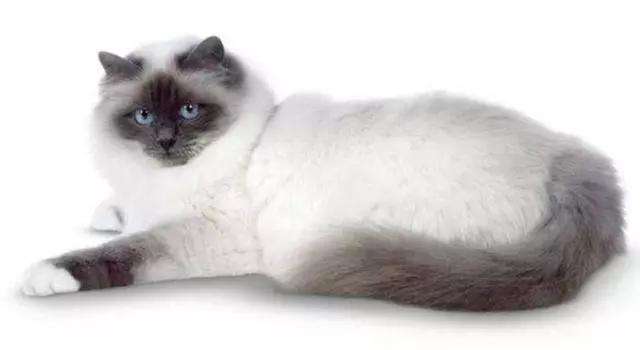Birman
IUCN
LCBasic Information
Feature
The cat with its own legend
Distribution and Habitat
Originated from Myanmar, it is now distributed all over the world as a pet cat.
Appearance
The Birman cat is longer than the typical Persian cat, with a narrower face and a light golden body, which contrasts with the color of the face, ears, head and tail. Appearance: Medium to large. The body and head are strong, and the center of gravity is low, giving people a solid feeling. The ear tips are slightly rounded. The tops of the front paws are white, and all the way to the back of the legs is white. A pair of unique sapphire eyes, four paws like wearing snow-white gloves, and a confusing life experience make the Birman cat, known as the "Sacred Cat of Burma", exude a unique temperament.
The colors are divided into seal, blue, lilac, chocolate, red, cream and tortoiseshell, and all colors can be added with lynx patterns.
Details
The Birman cat is also known as the Burmese sacred cat. Legend has it that it was first raised by monks in ancient Burmese temples and was regarded as a temple guardian cat. It was introduced to Europe in the 18th century and gradually evolved and finalized.

According to modern history, a pair of Birman cats were first transported from Burma to France in 1919. During the transportation, the male cat died, leaving only the female cat and her kittens. Since then, the Birman cat has not continued to develop in Europe and was confirmed in France in 1925. But during World War II, there were only two Birman cats left in Europe. In order to save this endangered breed, breeders had to use crossbreeding to re-establish the breed. Since then, the registration of general Birman cats must have at least five generations of purebred bloodlines.
The Birman cat was confirmed by the UK in 1966, and the CFA recognized this breed in 1967.
An ideal Birman cat should be medium to large, strong, with long and fine fur, but not as rich as Persian cats. The fur color should be light, like a layer of golden yellow. The key color is on the face, feet and tail, and the white glove mark on the four paws is the unique feature of the Birman cat. The eyes should be round and large, blue.
Birman cats are gentle, very friendly, and have pleasant voices. They are docile and friendly, and crave the owner's affection. They like to play with their owners and are very friendly to other cats. Once they feel safe in a new environment, they will reveal their sweet and kind character. They like to move around on the ground, but are not keen on jumping and climbing. They also like to play, but never make any demands on their owners. They love cleanliness and are happy to live in a comfortable home. They also like to walk in the yard or garden when the weather is fine.
How to distinguish between Ragdoll cats and Birman cats? Ragdoll cats are larger in size and have very large faces. Birman cats are smaller in size and have smaller faces. The most obvious feature is their hair. Generally speaking, Birman cats have a single color of hair, while Ragdoll cats have two or three colors. Finally, Ragdoll cats are better in terms of personality, after all, Ragdoll cats have super good personalities.
Protect wild animals and eliminate game.
Maintaining ecological balance is everyone's responsibility!








